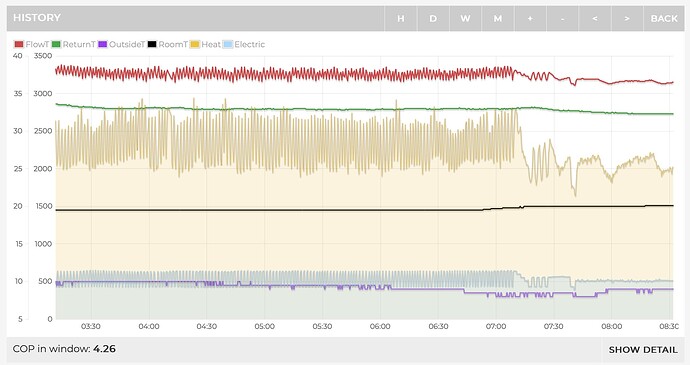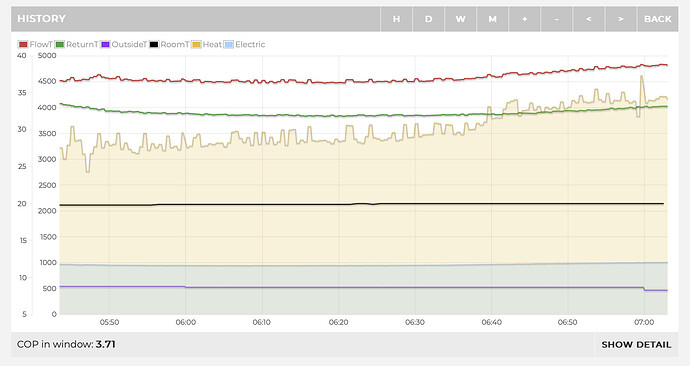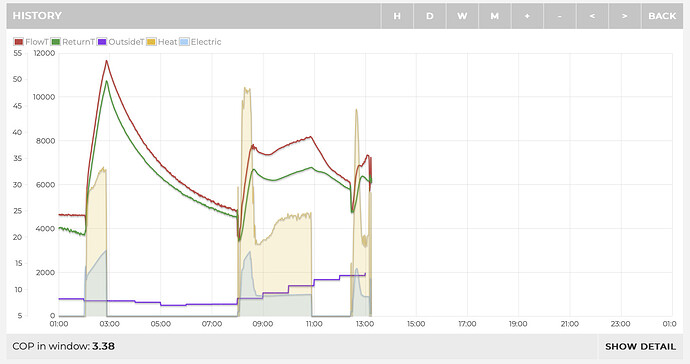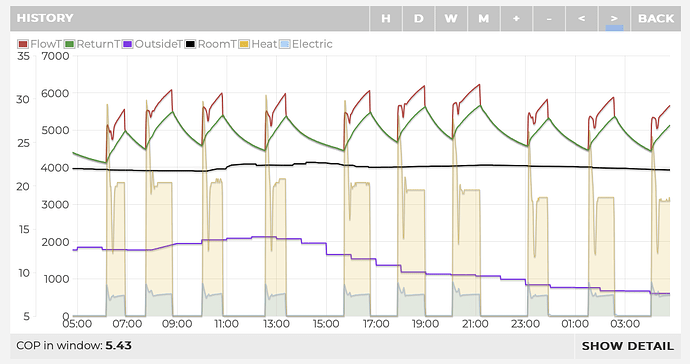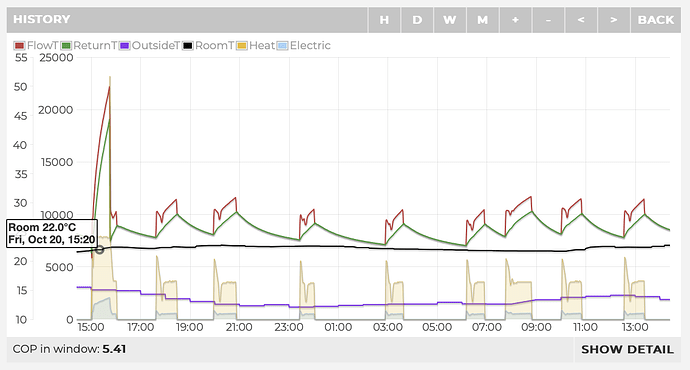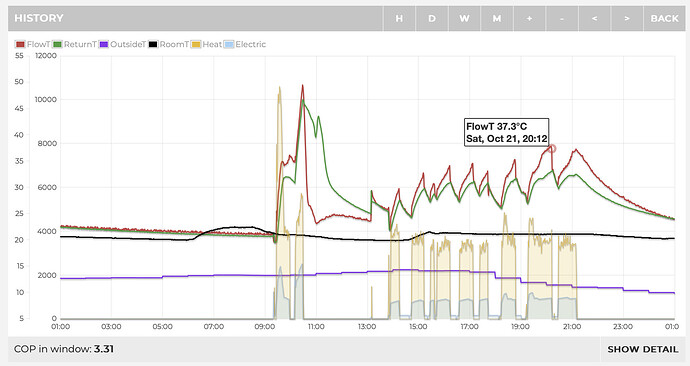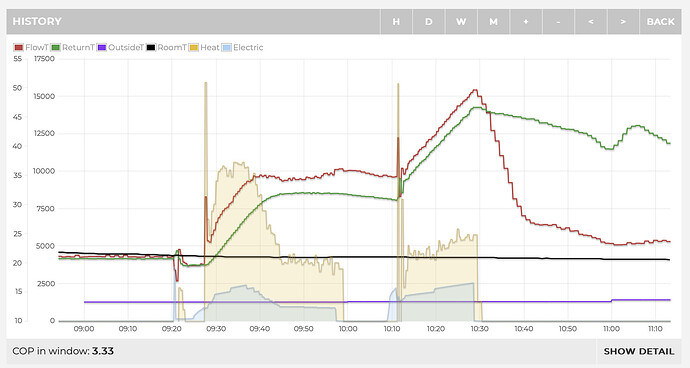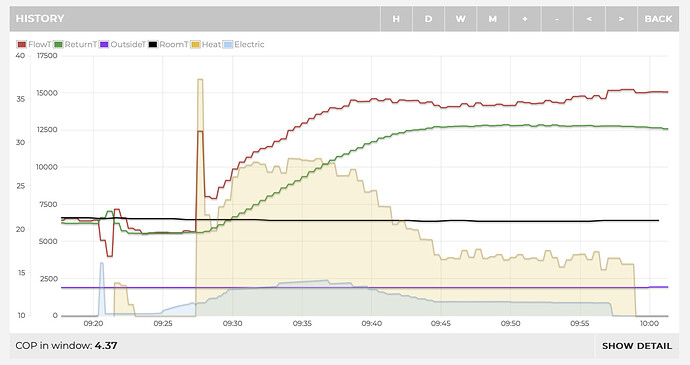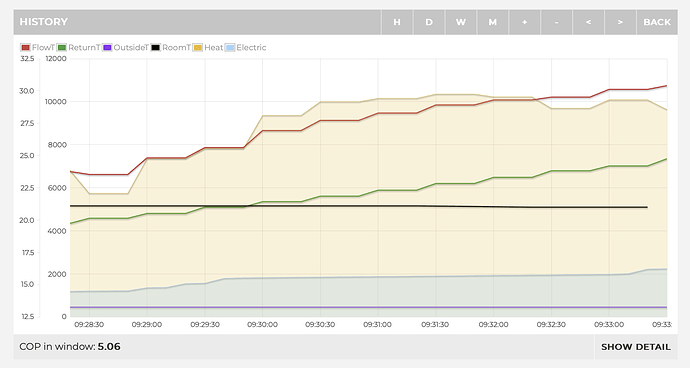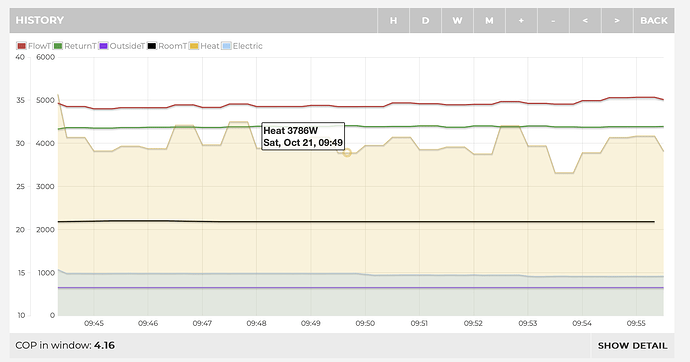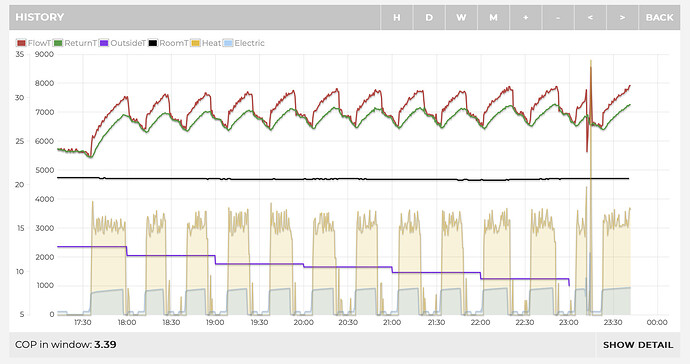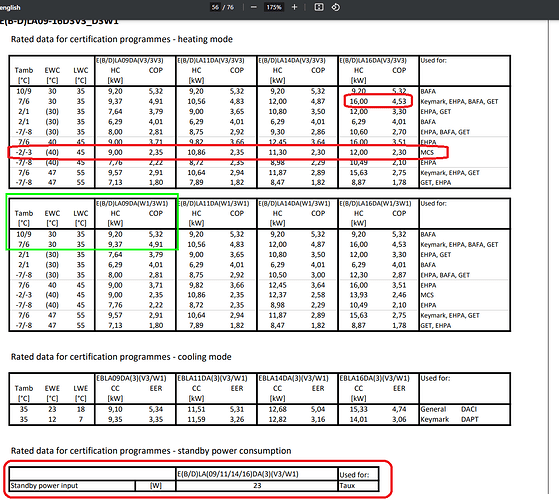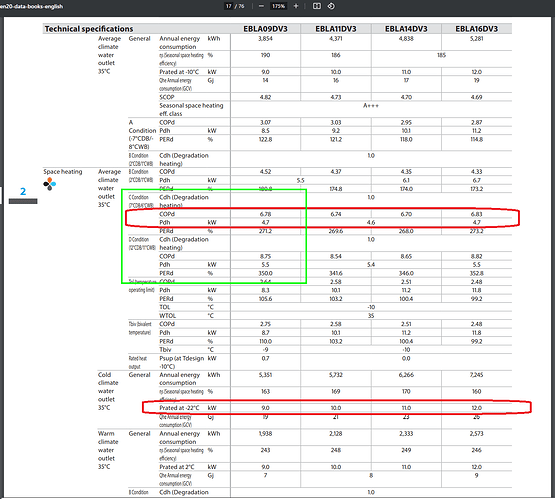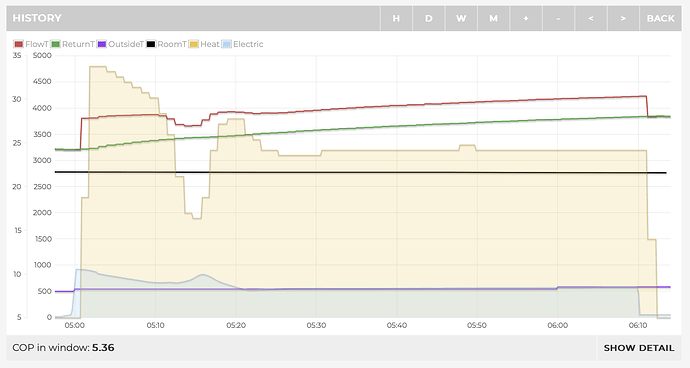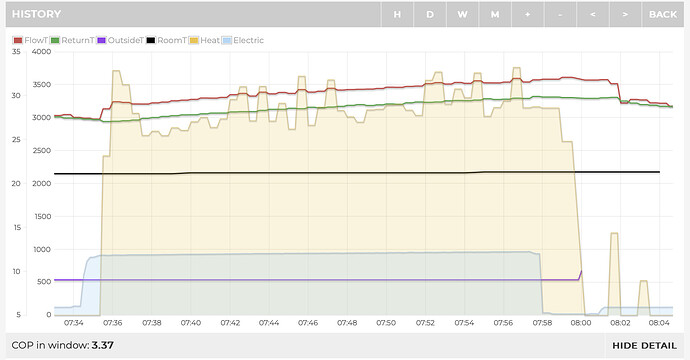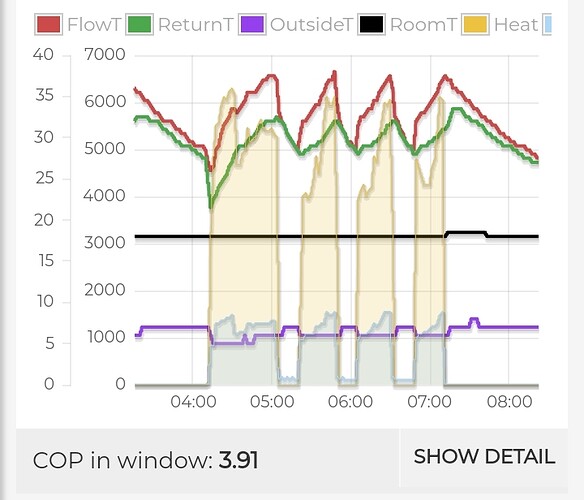Another very interesting thread! Like you, as we discussed on another thread you started, I had a Daikin 9kW ASHP installed by Octopus in May, and used it in earnest last weekend. My Madoka room thermostat is unfortunately in the S-facing front room (my mistake when asked by installer, it was a convenient route and installation spot :-/), any sun at all and the temp exceeds 20deg, whilst the N-facing back room was really cold. Rather than mess with thermostat offsets, which would require manual intervention any time the sun came out (!), I switched to only weather compensation i.e. flow temp determined by outside temp. This has worked really well from a comfort point of view, so as a first pass, we’re happy. Hurrah. My wife thinks the radiators are voodoo, because they never feel “hot” but the rooms are toasty! I’m inclined to agree…
I have adjusted the WD curve to be (flow/outside) 50/-7, 26/15, because the house is warm enough at 14/15 outside without heating. It was previously 50/-7 26/20 as left by the Octopus guys. However, when it got to 14/15 outside, it was still cycling on, so I discovered the register [4-02] which sets the maximum temp for the space heating to come on, and set it to 14. Bingo, HP turns off :-). I guess I could move the upper setting to say 26/20, as it was, and have the max outside temp setting turn it off, but then it might be too hot at the high setting when it’s 14 outside.
You can also set up a simple schedule to change the flow temp by ±x degrees, in the Daikin MMI, not in the app. Go to installer controls, Space Heating, and you’ll find it. I’m still experimenting with this, since the outside temp isn’t constant it’s hard to judge if the floe temp is dropping overnight - I set it to -2 22.30-6.00, but the crucial back room is hardly changing temp at all, as monitored by a simple SHT3X + Tasmota ESP8266 + MQTT + NodeRed combination.
I don’t have your sophisticated energy output monitoring, but I could… and might! I probably need to go through the Octopus survey and radiator numbers to see how they work, having read the very instructive advice you’ve been given here. My lead installer certainly seemed to know what he was doing, but there were a couple of points where I was a bit “hmm, I’m not convinced you know why you’re doing that!”. And I’ve found out lots since.
Cheers
